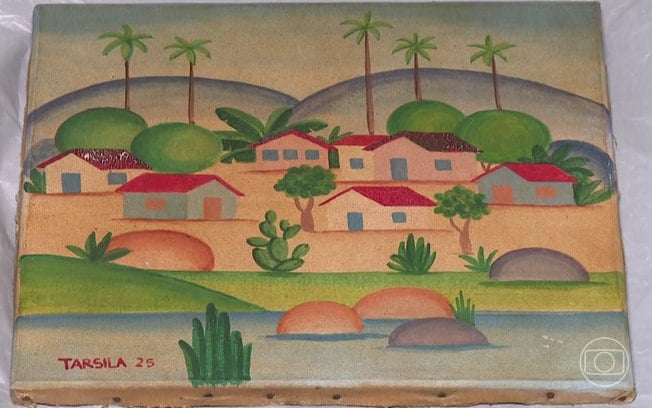The family of Tarsila do Amaral, one of the greatest figures of Modernism in Brazil, confirmed the authenticity of a unpublished painting by the artist, almost 100 years after its creation. The work, dated 1925, remained unknown until recently, revealed in a small gallery in the Center of São Paulo, whose exact location is kept confidential for security reasons.
The painting was presented in April 2024 during an art fair in São Paulo, generating great curiosity and doubts about its provenance. Investigations revealed that the original owner of the work was Mikael Abouij Naid, a Lebanese resident in Brazil in the 1950s, who acquired the painting directly from Tarsila as a wedding gift for his wife, Beatriz Maluf.
After Beatriz’s death in the late 1970s, the painting was taken to Lebanon, where it remained until 2023, when the couple’s son brought it back to Brazil.
Initially, the discovery of the painting caused unrest and uncertainty about its authenticity. However, a specialized commission, led by Tarsila’s family and using scientific and technological methods of verification, concluded that the work is genuine.
The canvas belongs to Tarsila do Amaral’s Pau Brasil phase, a period in which the artist explored Brazilian landscapes, both urban and rural, creating some of the most iconic pieces of national Modernism. The new work, inspired by the farms in the interior of São Paulo, joins Tarsila’s recognized collection as a milestone of her contribution to Brazilian art.
Tarsila do Amaral: Brazilian art
Tarsila do Amaral (1886-1973) was one of the central figures of Brazilian Modernism, standing out for her painting and drawing. His most iconic work, “Abaporu”, from 1928, deeply marked national art.
He participated in the cultural renewal of Brazil in the 1920s, always seeking to exalt the Brazilian identity. He was part of the “Group of Five”, alongside Anita Malfatti, Menotti del Picchia, Mário de Andrade and Oswald de Andrade, with whom he launched the “Anthropophagic” movement, the most daring of Modernism.
Born into a wealthy family of farmers, in Capivari, in the interior of São Paulo, Tarsila lived part of her youth on family farms. He studied in São Paulo and Barcelona, where he painted his first work, “Sacred Heart of Jesus”, at the age of 16.
